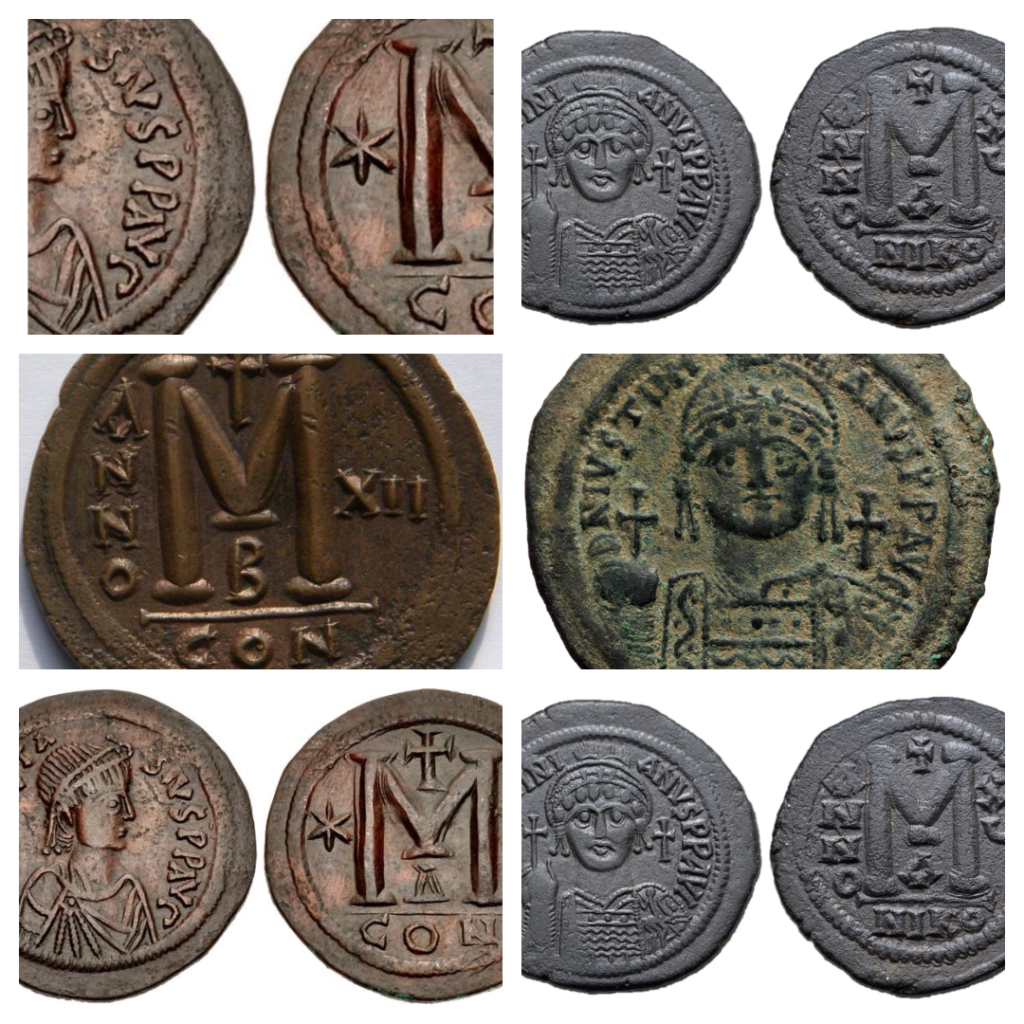Byzantine Copper Coins Itys: A Gateway to Ancient History
Unveiling the Byzantine copper coins itys
The term Byzantine copper coins itys unveils a captivating segment of ancient currency that holds immense historical, cultural, and economic value. These coins, crafted primarily from copper, were an essential part of the
Byzantine Empire’s vast monetary system, playing a pivotal role in facilitating trade and commerce across its sprawling territories. While the exact significance of the term “itys” is debated among historians, it is believed to either refer to a specific coin type or a regional usage of such coins. Regardless, these artifacts offer a fascinating glimpse into the Byzantine Empire’s sophisticated economy and artistic heritage.

The Byzantine Monetary System
The Byzantine Empire, which thrived for over a millennium, boasted a robust and intricate monetary system. At its core were three primary types of coins: gold (solidus), silver (miliaresion), and copper (commonly referred to as follis). While gold coins were reserved for significant trade and diplomatic transactions, copper coins like the itys catered to the daily needs of common citizens.
These copper coins were minted in large quantities to ensure their availability for local markets, small-scale trade, and everyday transactions. The Byzantine coins, in particular, were essential in bridging the gap between the wealthy elite who traded in gold and the working class who relied on copper currency.
Artistry in Copper
One of the most striking features of Byzantine copper coins itys is their intricate artistry. Far from being mere tools of trade, these coins were miniature works of art that conveyed the empire’s values, beliefs, and power.
- Religious Symbols:
Byzantine copper coins frequently featured Christian imagery, reflecting the empire’s deep-rooted connection to the religion. Icons of Christ, the Virgin Mary, saints, and angels were common, emphasizing the divine authority of the emperor and the Byzantine state. - Imperial Portraits:
Many coins depicted the reigning emperor, often accompanied by inscriptions that proclaimed their titles and achievements. These portraits served both as a form of propaganda and as a record of the emperor’s reign. - Inscriptions and Messages:
The inscriptions on these coins often included prayers, blessings, or official mottos. These messages were not only a testament to the empire’s piety but also a tool for unifying its diverse population under a shared cultural and religious identity.
Economic and Social Role of Byzantine Copper Coins Itys
The itys coins were indispensable in the Byzantine economy, particularly among the lower classes. While gold solidi facilitated international trade and state-level transactions, copper coins ensured that everyday commerce thrived.
- Facilitating Local Trade:
Markets and bazaars across the empire relied heavily on copper coins. Farmers, artisans, and merchants used these coins to buy and sell goods, from food to clothing to household items. - Bridging Social Classes:
Copper coins played a vital role in connecting different social classes within the empire. By enabling the working class to participate in the economy, they helped maintain a sense of stability and cohesion. - Regional Variations:
The empire’s vast expanse meant that copper coins like the itys often varied in design and size depending on the region. These variations provide valuable insights into the local economies and cultural influences of different parts of the Byzantine Empire.
Historical Insights from Copper Coins
Byzantine copper coins itys serve as tangible links to the past, offering historians and archaeologists a wealth of information about the Byzantine Empire.
- Trade and Commerce:
The widespread circulation of these coins reveals the extensive trade networks that connected the Byzantine Empire to neighboring regions. Archaeological finds of Byzantine coins in distant lands indicate the empire’s influence and its role in global commerce. - Societal Structure:
The imagery and inscriptions on these coins provide clues about the empire’s societal hierarchy, religious beliefs, and political structure. They also shed light on significant events, such as wars, reforms, and the reigns of specific emperors. - Cultural Exchange:
The designs on Byzantine copper coins often incorporated elements from neighboring cultures, reflecting the empire’s interactions with other civilizations. This cultural exchange enriched the artistic and symbolic value of the coins.
Modern-Day Significance of Byzantine Copper Coins Itys
Today, Byzantine copper coins itys are highly prized by collectors, historians, and enthusiasts of ancient artifacts. Their appeal lies not only in their historical significance but also in their aesthetic and cultural value.
- Collectibility:
Collectors around the world seek these coins for their rarity, beauty, and historical importance. Well-preserved examples can fetch high prices in auctions and are cherished additions to private collections and museum exhibits. - Archaeological Discoveries:
Excavations in former Byzantine territories often uncover caches of copper coins, providing invaluable insights into the empire’s economic and social life. These discoveries continue to shape our understanding of Byzantine history. - Educational Value:
For students and scholars of history, Byzantine copper coins itys are a rich source of information. They offer a tangible connection to the past, bringing the stories of the Byzantine Empire to life.
Conclusion
The enduring allure of Byzantine copper coins itys lies in their ability to bridge the gap between ancient and modern times. These coins are more than just remnants of a bygone era; they are symbols of the Byzantine Empire’s economic ingenuity, artistic brilliance, and cultural legacy. From their intricate designs to their role in everyday commerce, they provide a window into a civilization that shaped the course of history.
For those intrigued by ancient artifacts, exploring related topics such as Byzantine numismatics, medieval trade systems, and ancient coin collecting can open up a world of fascinating discoveries. Whether you’re a historian, collector, or simply an enthusiast of ancient cultures, Byzantine copper coins itys offer a treasure trove of stories waiting to be uncovered.
Leave a Reply